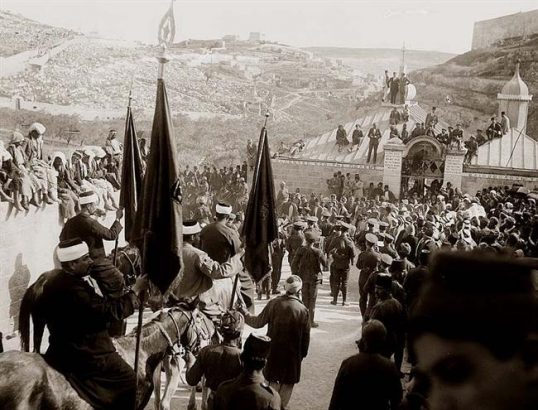
Word of the Day: Praxis
Today’s word of the day, thanks again to Merriam-Webster, is praxis. Praxis is a noun that means “practice, as distinguished from theory; application or use, as of knowledge or skills,” “convention, habit, or custom,” or “a set of examples for practice” (https://www.dictionary.com/browse/praxis). Merriam-Webster says, “Praxis is a formal word referring to the practical application of a theory—in other words, what one does to act on a theory (such as feminist theory) to which one is committed. Praxis is also used synonymously with action or practice to refer to the exercise of an art, science, or skill, or to customary conduct within a given sphere” (https://www.merriam-webster.com/word-of-the-day).
M-W goes on to say, “We all know that praxis makes perfect, right? Oh wait, it’s practice, not praxis, that makes perfect! Worry not about confusing the two: as part of our educational praxis (how we act on our belief in the importance of providing information about language), we’ll sort them out here. Both praxis and practice come ultimately from the Greek verb prassein (‘to do’ or ‘to practice’), and both can refer to a habit or custom—that is, a usual way of doing something or of conducting oneself. Praxis, however, is more at home in formal, and often academic, writing; a sentence like ‘it is my praxis to eat breakfast cereal every morning’ might make sense, but it’s not idiomatic” (ibid.). Idiomatic, by the way, when we’re talking about daily usage, basically means, “That’s just the way we do it.”
Praxis entered the language in the “1580s, ‘practice or discipline for a specific purpose,’ from Medieval Latin praxis ‘practice, exercise, action’ (mid-13c., opposite of theory), from Greek praxis ‘practice, action, doing,’ from stem of prassein, prattein ‘to do, to act’ (see practical). From 1610s as ‘a collection of examples for practice.’ In 20c. given a particular sense in Marxist jargon” (https://www.etymonline.com/search?q=praxis).
This “sense in Marxist jargon” is not easy to explain without going down a philosophical rabbit hole. The idea is that Aristotle and other early philosophers created a dichotomy between theory and practice that is akin to the dichotomy between soul and body. Marx asserted that such dichotomies are false: “The notion of praxis has typically been defined in a Marxist manner, exemplified in Marx’s exhortation for theorists to not simply interpret the world but to change it. The thrust of Marxist praxis is the transformation of subjectivity through the process of human action or labour upon an object, which is described in Marx’s philosophy by the use of a revised, concretized Hegelian dialectic” (https://www.waikato.ac.nz/__data/assets/pdf_file/0005/149261/NatalieCowley.pdf).
On this date in 1920, the Jerusalem or Nebi Musa riots began and lasted through April 7.
In 1914, Jerusalem and Palestine were part of the Ottoman Empire. The Ottoman Empire aligned itself with the central powers, Germany and the Austro-Hungarian Empire. And the central powers lost. One result of that loss that the Ottoman Empire was disassembled, and the part of the empire that is today Israel and Jordan were under the control of Great Britain, known as the British Mandate. And in 1917 Lord Balfour had promised the Jews that they would have a home in their historic land.
The Arabs also wanted independence from the Ottoman Empire, enough that they rebelled against the Ottomans in 1916 with the support of the British. And they believed that the British had promised them an independent homeland.
After the war was over, there were tensions in the Middle East, even fighting. For instance, Jews had settled in Northern Galilee in a village named Tel Hai. In 1920, the Arabs in the area were fighting the French in what is called the Franco-Syrian War, and local Bedouin tribes fought with the Arabs. The Jews in the area, however, stayed neutral. One March 1, 1920, several hundred Arabs and Bedouin approach Tel Hai to search for French soldiers. Initially the Jews tried to negotiate with the Arabs, but eventually shots were fired. Six Jews were killed, and five Arabs (https://en.wikipedia.org/wiki/Battle_of_Tel_Hai).
Jewish leaders asked for more security from the Occupied Enemy Territory Administration (OETA), but they were ignored. They asked the OETA for forbid any pro-Syrian demonstrations in Mandatory Palestine (Palestine under the British Mandate). But again, they were ignored (https://en.wikipedia.org/wiki/1920_Nebi_Musa_riots).
The Nebi Musa festival brought tens of thousands of Arabs into Jerusalem, as it had for many years. Prior to 1920, the Ottomans provided massive security for the city, but the OETA didn’t really understand the dangers. Arabs, who were upset about Zionism among the Jews, began attacking Jews in the city that morning. Different versions of what started the riot, but eventually, “The crowd reportedly shouted “Independence! Independence!” and “Palestine is our land, the Jews are our dogs!” Arab police joined in applause, and violence started. The local Arab population ransacked the Jewish Quarter of Jerusalem. The Torath Chaim Yeshiva was raided, and Torah scrolls were torn and thrown on the floor, and the building then set alight…. Five Jews and four Arabs died in the riots. Two-hundred and sixteen Jews were injured, 18 critically, and 23 Arabs, one critically. About 300 Jews were evacuated from the Old City (ibid.).
Eventually, over 200 people were arrested for their parts in the riots, 39 of them Jews (ibid.). And some were sentenced, though the next year a general amnesty was declared. The tension, however, has never really gone away. The Arabs have turned their hatred of the Jews into praxis.
Today’s image: “Arabs congregate in Jerusalem’s square for the Nebi Musa festival, 4 April 1920. Photo source: Wikipedia” (https://fathomjournal.org/mandate100-1920-a-pivotal-year-reexamined/).